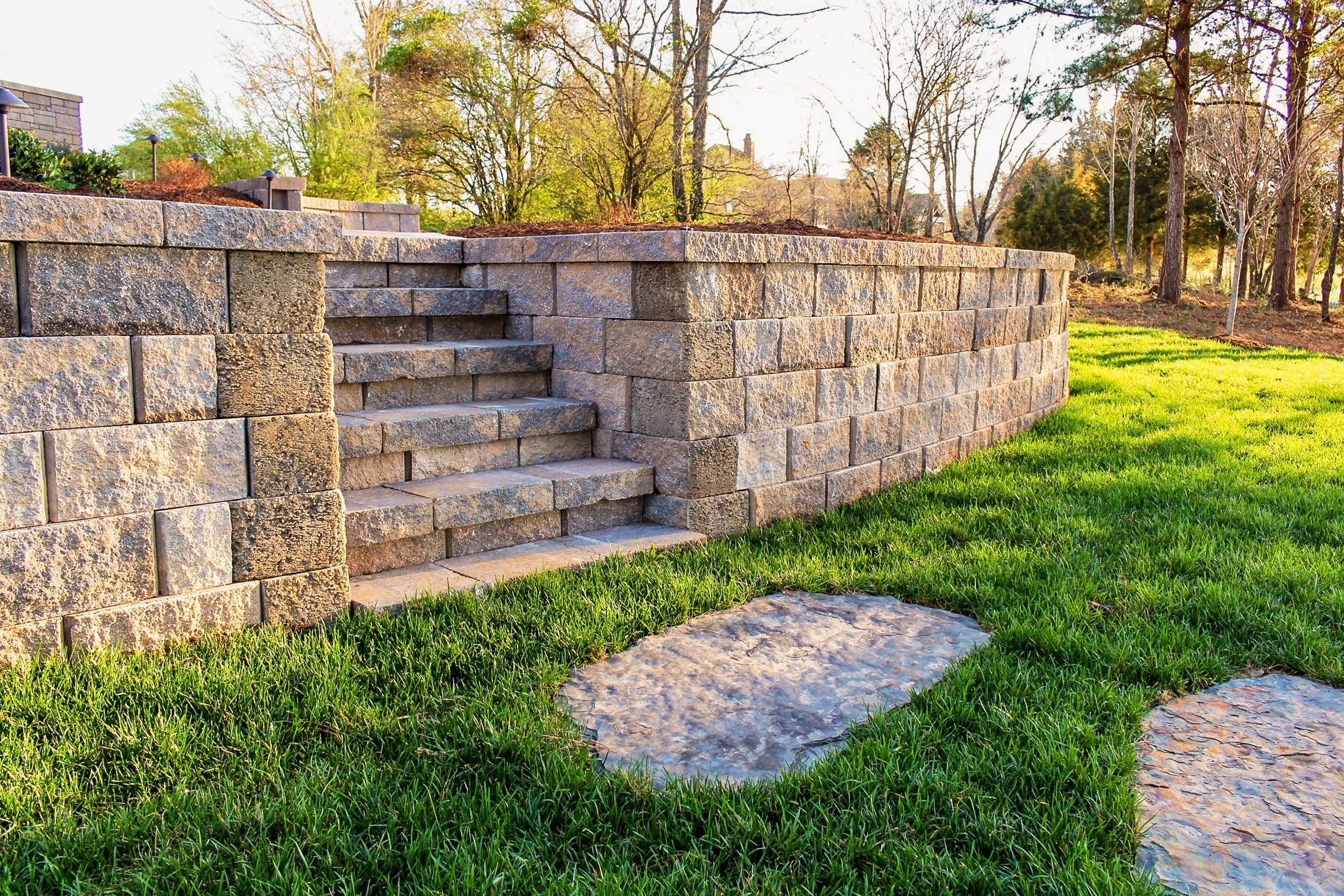Landscape Design in Oak Ridge, TN: 5 Retaining Wall Design Ideas for Structural Beauty and Functionality
Retaining walls are more than just a practical necessity in your landscape design; they can also be beautiful focal points that elevate the entire aesthetic of your outdoor space. In Oak Ridge, TN, where the natural terrain can vary dramatically, retaining walls are essential for creating stable, usable spaces in your backyard. Whether you're looking to control erosion, manage water runoff, or simply add an elegant touch to your landscape, the right retaining wall design can combine both structural beauty and functionality.
Related: Concrete Pavers 101: A Homeowner’s Guide to Designing a Custom Paver Patio in Farragut and Karns, TN
1. Wall Block Retaining Walls for Durable and Stylish Landscaping
Wall block retaining walls are an excellent choice for homeowners seeking both durability and style. With their clean, uniform appearance and versatile design options, wall blocks create a modern yet timeless look that complements a variety of landscapes. Available in a range of colors and textures, wall blocks can be customized to match the aesthetic of your outdoor space, from sleek, contemporary designs to more rustic, natural styles. Whether you’re adding a seating area, a water feature, or vibrant plantings, wall blocks offer a solid foundation for your landscape design, ensuring it remains beautiful and functional for years to come.
2. Curved and Flowing Lines for Soft, Natural Beauty
One of the most striking ways a landscape professional can incorporate a retaining wall into your landscape design is by creating curves rather than straight lines. Curved walls can mimic the natural contours of your property, softening the look and avoiding the harsh, rigid angles of traditional straight-edged walls. These flowing shapes can create a sense of movement and help guide the eye across your backyard. Whether surrounding planting beds, blossom borders, or creating a terraced landscape, a curved retaining wall adds a relaxed, organic feel that fits seamlessly into the natural landscape.
Related: Create the Ultimate Outdoor Living Space for Wine Tasting Evenings in Knoxville and Maryville, TN
3. Multi-Level Terracing for Visual Depth and Function
Incorporating multiple levels into your retaining wall design adds depth and dimension to your landscape. Terraced retaining walls are particularly effective in sloped areas, creating distinct planting zones that allow for a variety of plantings to thrive. Each level can feature different planting varieties, creating a rich, dynamic visual appeal. The layers also help break up large sections of your backyard, turning a steep incline into an interesting, usable space. The first tier could be dedicated to planting beds, while the second might feature a small patio or seating area. These visual separations create more space and make your outdoor areas feel more expansive.
4. Modern Geometric Shapes for a Sleek, Contemporary Look
For a more modern landscape design, geometric retaining walls can provide a sleek, clean aesthetic. Straight lines, sharp corners, and stacked blocks can create a minimalist, yet impactful look. The sharp edges of a geometric retaining wall work especially well when paired with modern outdoor furniture or contemporary landscaping elements like minimalist planters or linear walkways. A geometric design offers a strong architectural presence and can divide spaces, create raised beds, or even form boundary walls that provide both privacy and style.
5. Integrating Plantings Into the Wall Design for Greenery and Texture
Adding greenery directly into the design of your retaining wall allows the structure to feel less like an isolated feature and more like an integrated part of the landscape. Whether it’s built-in planters, spaces for creeping vines, or narrow planting shelves, incorporating plantings into your retaining wall design softens its appearance and enhances its functionality. A wall with plantings can create vertical landscaping that makes full use of your space while adding a pop of color and texture. Over time, these plantings can spill over, cascading down the wall and further blending the man-made structure with the natural environment.

